News
Sign up for recent trade news that can affect your business:
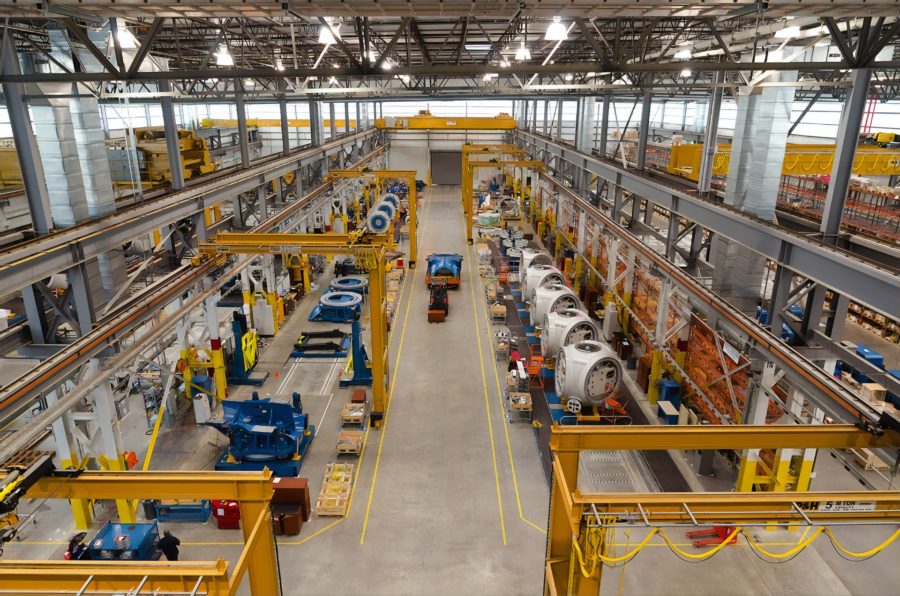
Canadian wholesale sales rose 5.7 per cent to $52.6 billion in May, rebounding from a record-setting plunge in April as COVID-19 lockdowns ground factory activity to a halt.
Statistics Canada reported Friday that wholesale trade, which records sales of supplies to retailers, before they are resold to consumers, rose to an all-time high of $65.1 billion in January, before railway blockades walloped supplies in February, and COVID-19 lockdowns hit them again in March and beyond.
But activity seems to have bottomed out in April, with a plunge of 21 per cent to just under $50 billion. That was its lowest level since 2013. But in May the data agency says sales picked up in six of the seven subsectors it monitors. The lone exception was machinery equipment and supply, which fell again.
Most of May’s surge came from the motor vehicles and motor vehicle parts sector. “The sales pattern here largely reflects manufacturers being closed for all of April and parts of May — there was little inventory for most motor vehicle and motor vehicle parts wholesalers to sell,” Statscan said.
After losing two thirds of their sales in April, the motor vehicle and motor vehicle parts and accessories subsector rebounded by one third to $4.2 billion in May.
Another important sector was the food and beverage sector, which has come through COVID-19 comparatively better, since business at grocery stores has boomed throughout the pandemic as Canadians stay home and cook.
May’s restart means Canadian wholesalers have recovered about 18 per cent of what they lost to COVID-19 but they’re still 19 per cent below the high water mark they hit in January.
Sales were up in seven provinces, but Ontario and Quebec saw most of the gain.
While an encouraging sign, Scotiabank economist Derek Holt noted that the numbers show the economy has a long way to go to dig itself out of the COVID-19 hole.
“Almost all of that was through higher volumes with stable prices,” he said. “That’s a fairly mild rebound from the 21 per cent disaster during the prior month.”
(Source: CBC)
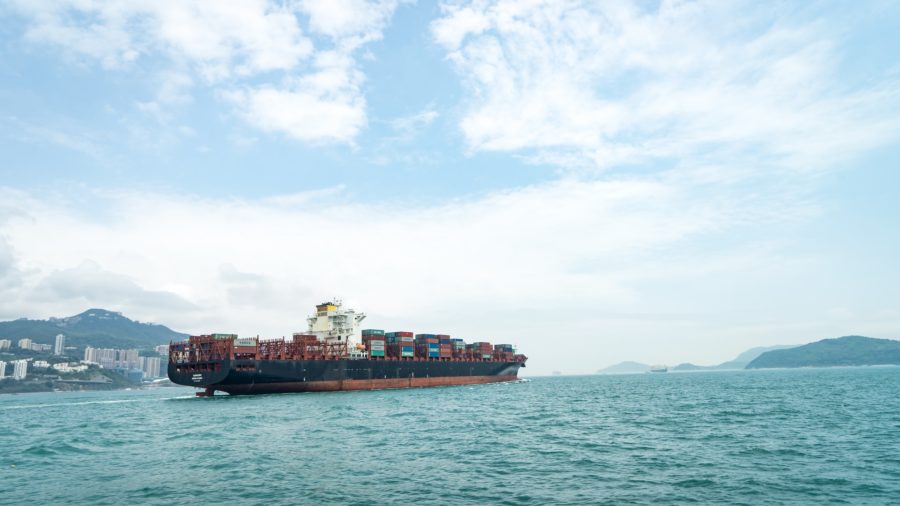
Asia-Europe freight rates flattened in the past few weeks as carriers reinstated several blank sailings and introduced extra loaders in what analysts see as a response to cutting too much capacity amid stronger-than-expected volume on the trade.
The China-North Europe spot rate edged down 1.4 percent in the past week to $907 per TEU, while the China-Mediterranean (Med) rate of $940 per TEU is down 1.2 percent, according to the Shanghai Containerized Freight Index (SCFI). On Asia-North Europe routes, the spot rate is 32 percent above year-ago levels, and the Asia-Med rate is 33 percent higher.
Volume data on the Asia-Europe trade lags by two months, with the last available numbers for May showing a drop in volume of 14.6 percent, according to Container Trades Statistics (CTS). Carriers in the first five months carried almost 1 million TEU fewer than the same period in 2019, with the demand falling sharply from February.
However, the volume carried on Asia-Europe in May was an improvement over April, which recorded a 20 percent decline. While June numbers will only be available in August, the volume data is trending upwards, with European retail outlets open again and factories resuming production.
Asia-Europe has seen 18 of 189 scheduled blanked sailings being reactivated in the past few weeks, according to Sea-Intelligence Maritime Analysis, with only two new blank sailings announced in week 29 (July 13–19). In its latest Sunday Spotlight, the analyst said fewer new blank sailings indicated a belief by carriers that current capacity cuts were adequate, considering the reinstated sailings.
“While we should caution that this could simply be a question of the carriers being too optimistic, or alternatively that they are planning to sail heavily underutilized for the peak season, this is likely not the case, as the carriers have throughout the pandemic shown an incredible affinity for balancing supply to demand, in order to keep freight rates up,” the analyst noted.
This has been particularly effective on the trans-Pacific, where a spike in imports from Asia consisting of seasonal merchandise, personal protective equipment (PPE), and goods that retailers required for inventory replenishment — coupled with cancelled sailings — kept spot rates at 10-year highs.
(Source: JOC.com)

The Office of the U.S. Trade Representative announced the imposition of a 25% import duty on various French products in response to that country’s new Digital Services Tax, which Washington says discriminates against U.S. tech firms such as Google, Facebook and Apple Inc.
The tariffs are set to take effect Jan. 6, 2021. Products that are set to be subject to the tariffs include makeup, soap and handbags, according to a notice issued by the USTR.
The dispute arises from new legislation introduced last year by France aimed at stopping multinationals from avoiding taxes by setting up headquarters in low-tax EU countries. Currently, tech giants like Google and Facebook pay nearly no tax in countries such as France where they have large sales.
The pioneering digital services tax would impose a 3% annual levy on French revenues of digital companies with yearly global sales worth more than €750 million (US$855 million) and French revenue exceeding €25 million (US$28 million).
The French products scheduled for January 2021 tariffs over the DST include the following:
Click here to read the full notice.
(Source: The Hill)
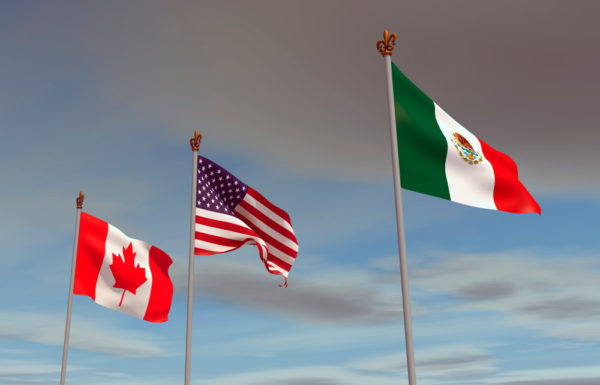
In September 2018, The United States, Canadian, and Mexican governments announced a new trilateral free trade agreement. As of March 2020, the agreement, known as USMCA or CUSMA, is approved by all three nations and is set to effectively replace the previous agreement, NAFTA.
The USMCA’s main goal is to implement a free-trade system that accommodates for the digital era. The agreement features several key changes that make it different from and a notable improvement to NAFTA.
Prior to the introduction of the USMCA/CUSMA, the North American Free Trade Agreement (NAFTA) was in place to help reduce trade costs, increase investment opportunities, and enable North American nations to play a more integral role in the global marketplace. The agreement came into effect in 1994.
Like the newly approved USMCA, NAFTA is an agreement between Canada, the U.S., and Mexico, with the goal of liberalizing trade between the three countries.
The new agreement is known in the U.S. as the United States-Mexico-Canada Agreement (USMCA) and worldwide as the Canada-United States-Mexico Agreement (CUSMA). The main goal of the USMCA/CUSMA is to modernize free trade between the three countries and make some necessary updates to rules of origin and processes around North American trade.
There are some main differences between the USMCA and NAFTA that will make the USMCA a more ideal replacement for NAFTA.

One big change was the threshold for duty-free entry of low-value goods into each of the three countries. The new de minimis include:
• Canada: $40 CAD for taxes and $150 CAD for customs
• U.S. – $800 USD
• Mexico – $50 USD for taxes and $117 USD for customs
Unlike NAFTA, the USMCA won’t require importers to complete a formal certification document. Instead, importers, exporters, or producers can use informal documentation including commercial invoices. However, under the USMCA, previous NAFTA certification documentation and certificates will need to be kept for at least five years.
The U.S. dairy market will benefit from access to another 3.6 percent of the Canadian dairy market. The USMCA also removed restrictions on imports of ultra-filtered milk into Canada from the U.S. Canada further benefits from keeping the dairy supply management system currently in place, which maintains limits on imports of foreign dairy products.
The North American auto industry will also benefit from the changes made in the USMCA. For example, the agreement requires 75 percent of a vehicle’s parts to come from North America, an increase from the 62.5 percent rule in NAFTA. In addition, 70 percent of all glass, aluminum, and steel automotive fabrication materials must come from North America. Workers who help produce 40 percent of automobiles and 45 percent of light trucks will also be required to make at least $16 per hour.
There are several other areas that the USMCA will affect, making it a considerable improvement over NAFTA. Ultimately, the ratification of the new agreement will lead to several major changes in North American trade.
For up-to-date information regarding USMCA, visit our CUSMA page. If you need help understanding these changes, or navigating their impact, Carson International can walk you through these updates every step of the way.

Canadian and U.S. officials have agreed to keep the border between the two countries closed to non-essential travel until August 21.
Sources say both governments are on the same page with extending the border restriction measures for another month.
The ban on discretionary travel was first introduced in March and has been extended each month since. The latest extension was set to expire on July 21.
The agreement, as it stands, exempts the flow of trade and commerce, as well as temporary foreign workers and vital health-care workers such as nurses who live and work on opposite sides of the border. Tourists and cross-border visits remain prohibited.
This extension in no way impacts the flow of goods across the Canada-U.S. border. The border is open for trade, only closed to non-essential personal travel.
This comes as some U.S. political figures in border states have been pressuring Canada to begin a phased reopening of the shared border, despite the surging number of new cases of COVID-19 in parts of the United States, with some regions reporting record-breaking new daily case counts.
When asked in May what the benchmarks will be for signs it’s an appropriate time to loosen travel restrictions, Chief Public Health Officer Dr. Theresa Tam said that the first step would be carefully reopening travel restrictions within Canada.
She said drastically limiting who has been able to enter the country over the last few months — specifically international visitors — has been key to Canada controlling the outbreak.
Even when international travel can resume, Tam said the 14-day mandatory quarantine and follow-up enforcement of that order will remain “a cornerstone” of the disease control measures.
(Source: CTV News)
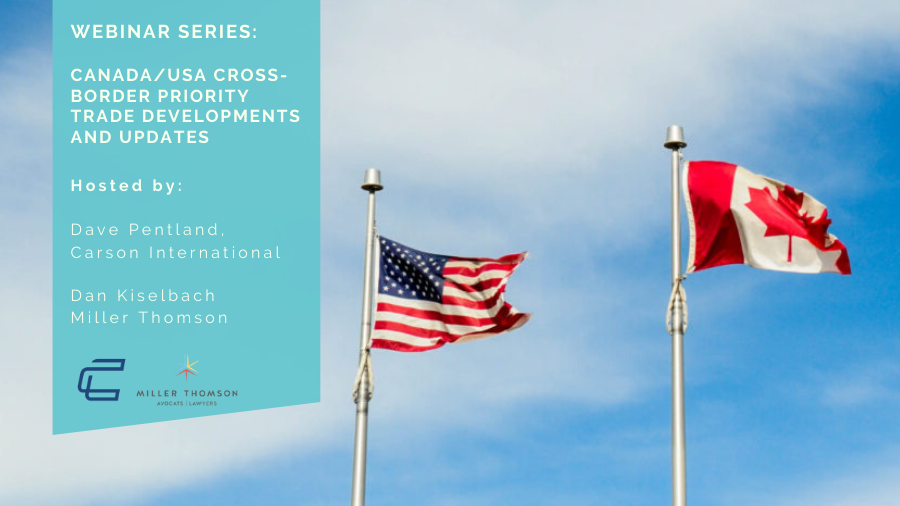
Carson International is pleased to partner with Miller Thomson LLP for a webinar series addressing Canada/U.S. cross-border trade developments and updates.
Trade has always been an integral part of the Canada / United States relationship and even during times of crisis, like today, business depends on goods moving as seamlessly as possible between our countries.
Our expert panel will explore with you the following topics: duty payment deferrals; tax deferrals; new CUSMA / USMCA / T-MEC rules of origin; tariff rate quotas, advance rulings; e-commerce; customs enforcement; potential US tariffs, potential Canadian countermeasures, “Buy America” provisions, trade sanctions; and anti-dumping and countervailing duties.
Dave Pentland, Carson International
Dan Kiselbach, Miller Thomson LLP
Personal Protective Equipment: What Importers Need To Know
Thursday, July 23, 2020
11:00am PST
The Canada-US-Mexico Agreement: What’s New in the “New NAFTA”
Thursday, August 6, 2020
11:00am PST
Non-Resident Importers: Tips and Traps
Thursday, August 20, 2020
11:00am PST
Risk Minimization Strategies: Advance Rulings
Thursday, September 3, 2020
11:00am PST
Please note, this webinar will also include a brief overview of aluminum tariffs.
Each webinar will be approximately 30 minutes in length.

Donald Trump’s trade ambassador continued to keep Canada’s steel and aluminum industry in suspense as trade experts, labour bosses and business leaders considered how best to retaliate if the White House decides to impose fresh tariffs on metals from north of the border.
Steve Verheul tells a House of Commons committee hearing that under the terms of the May 2019 agreement on tariffs, Canada would be able to impose retaliatory levies against American aluminum, as well as any U.S. products containing it.
He did, however, provide some insight into why Section 232 tariffs, so named for the portion of U.S. law that permits them on the basis of a perceived threat to national security, have proven such a go-to lever for the Trump White House.
“Unquestionably, we did have a crisis,” Lighthizer said of the decision in 2018 to impose tariffs on steel and aluminum imports from around the world. He suggested the move was aimed primarily at China — a longtime trade foe that has been in American sights for using its outsized production capacity to depress prices and undermine U.S. producers.
He described himself as part of an administration determined to move the United States beyond its post-war mission to be a charitable principal architect of the new industrial order, a role in which he believes the country has lingered too long at the expense of American jobs and prosperity.
Imposing tariffs was “essential” in 2018, “particularly looking back at where we would be if we hadn’t done something on it,” Lighthizer said. “And when you take an action like that, you almost have to take it on a global basis.”
Tariffs are a blunt instrument that can also cause domestic costs to rise, he acknowledged — but drastic action, exacting a toll that Americans were willing to pay, was necessary to bring the U.S. back from an “extreme free-trade position” that came at the expense of American manufacturing jobs.
“There’s a balance there, and the balance had swung way too far into the level of save a penny here, save a penny there, moving half your manufacturing to China and the other half to Vietnam,” Lighthizer said.
“Are tariffs a perfect instrument? No. But is there another instrument? I don’t know of it … It’s a far more complicated thing than this simple comment that, ‘Well, it’s always paid by the consumers.’ I just don’t buy it.”
While Lighthizer spoke, Steve Verheul — Canada’s chief trade negotiator during the effort to replace NAFTA and an assistant deputy minister at Global Affairs Canada — was telling MPs on the House of Commons trade committee in Ottawa about the federal government’s retaliation options.
The U.S.-Mexico-Canada Agreement, which officially replaced NAFTA on July 1st, won’t tie the government’s hands if that time comes, Verheul said. The separate cease-fire statement that saw the White House lift its original tariffs in May 2019 allows either country to impose retaliatory levies against incoming aluminum or any products that contain it, he said.
What actions Canada should take “really depends on what kind of action the U.S. takes,” Verheul told the committee.
“We have options in terms of how we might respond on a bilateral basis, because as I mentioned, the statement itself says ‘aluminum-containing products.’ That’s a very broad category. So there are a number of areas we could explore on that front.”
Should the U.S. action itself go beyond that May 2019 statement, Canada would be able to respond in kind, he added.
The U.S. claims of a spike in aluminum exports since the start of the pandemic are actually the result of always-on smelters in Canada adjusting their production away from the specialized, value-added products usually sought by automakers, which were forced to shut down assembly lines when the COVID-19 crisis hit.
Producers pivoted towards more generic primary aluminum products, shipping to the only storage warehouses that are cost-effective: facilities in the U.S., which is where the lion’s share of the North American aluminum market is.
“We see no justification for the U.S. to be contemplating this kind of action, because we have had no surge,” Verheul said.
“There has simply been a situation where the aluminum sector has made some adjustments, as aluminum industries in the U.S. have done, to accommodate the market demands during this particular period.”
Derek Burney, formerly Canada’s ambassador to the U.S. and one-time chief of staff to prime minister Brian Mulroney, urged Canada to take a hard line with the forces of protectionism, which he warned are on the march in the time of COVID-19 — and won’t evaporate in the U.S. even if the Democrats take over the White House in November.
“Because bilateral trade is roughly in balance, there is no reason for Canada to become a passive punching bag for U.S. protectionists and mercantilists,” Burney told the committee. “Arbitrary tariffs once again on Canadian aluminum exports will hurt American producers and American consumers more than anybody … we should not hesitate to retaliate.”
Ken Neumann, executive director of the Canadian chapter of the United Steelworkers union, accused the federal government of bungling the U.S.-Canada trade file and urged Ottawa to take a hard line with the White House.
“If the U.S. does reimpose 232 tariffs on Canadian aluminum, Canada must impose retaliatory tariffs on a wide range of U.S. products — and not only on aluminum,” he testified.
“You can’t continue to reward bad behaviour.”
(Source: The Canadian Press)
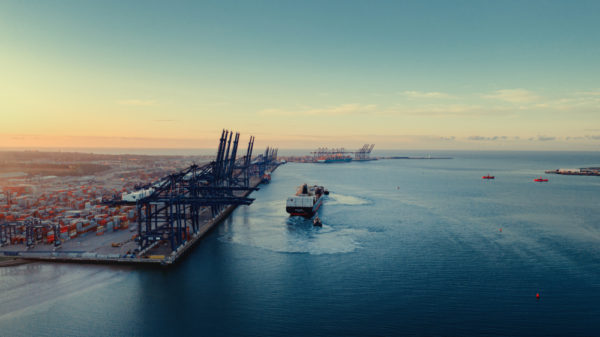
To help facilitate trade between countries, international trade agreements have been put in place to maintain efficient operations, comply with each nation’s standards, and avoid certain non-tariff and tariff barriers, among other benefits.
There are two central types of international trade agreements: bilateral and multilateral. Agreements could pertain to certain types of goods and services or specific market entry barrier types.
Bilateral agreements facilitate trade between two countries. Some bilateral agreements include Canada-Israel., U.S.-Mexico, and E.U.-South Africa, among others.
Also known as regional agreements, multilateral agreements form certain international trade unions, including the North American Free Trade Agreement (NAFTA) and the World Trade Organization (WTO). For example, multiple treaties including the Treaty of Rome help regulate the European Union, while the General Agreement on Trade and Tariffs shapes the WTO.
Having international trade agreements in place can benefit international imports and exports in several ways, including:
• Better access to a larger customer base
• Optimized supply chain operations through dealing with foreign suppliers via the agreement
• Reduced cost of penetrating foreign markets because of more efficient and simplified customs processes, duties, and regulatory compliance
• More efficient production through partially or completely relocated operations
• Easier access to foreign financial institutions and investors along with foreign workforces and customers

Ever since the General Agreement on Tariffs and Trade (GATT) was implemented, the world has seen an increase in multilateral trade agreements along with local trade agreements.
One important trade agreement that helped pave the way for multilateral regionalism was the 1944 Bretton Woods Agreement, which gave rise to the International Trade Organization (ITO), the International Monetary Fund (IMF), and the World Bank. The Bretton Woods Agreement began when both the U.S. and Britain came out of World War II as the world’s foremost economic leaders, which led them to develop a more liberated and cooperative trade system.
The GATT came along in 1947 as the ITO dissolved following the Bretton Woods Agreement. The GATT would help reduce tariffs for member nations, allowing for expanding multilateral trade, but a growing number of regional trade agreements also came out of it. Part of what would develop from the GATT just five years after its implementation would be the European Union.
Another key trade agreement to come about in the early 1990s would be the North American Free Trade Agreement (NAFTA), which formed in the U.S. between Mexico and Canada. By 1995, the GATT would be replaced by the World Trade Organization (WTO), which would work to develop and implement policies on far more than goods, covering services, investment, and intellectual property.
Another major recent development is the development and implementation of the United States-Mexico-Canada Agreement (USMCA), which is set to replace NAFTA. The USMCA will boost auto manufacturing, strengthen labor laws, provide more market access for dairy farmers, upgrade NAFTA to accommodate the technology sector, and more.
Understanding the ins and outs of international trade, particularly the impacts of international trade agreements, will help you stay up to date with trade law and keep your operations running as smoothly as possible. If you’re finding it difficult to keep up with trade laws or navigate the different agreements–let us do it for you. The knowledgeable trade experts at Carson International can provide reliable assistance on all things trade, from start to finish.
As the COVID-19 pandemic has spread in North America, it’s had a certain impact on customs and trade. The following is a timeline of all of the major announcements and updates that we’ve been tracking at Carson International.
Both the World Trade Organization (WTO) and the World Customs Organization (WCO) released a joint statement in early April revealing that they would join forces to enable trade for essential goods including food, medical supplies, and energy across the border. They also pledged to work toward ensuring that goods would reach those who need it the most.
You can read more about this update at the following link: https://www.carson.ca/2020/04/wco-and-wto-join-forces-to-minimize-disruptions-to-cross-border-trade-in-goods/
U.S. Customs and Border Protection developed and launched a website dedicated specifically to COVID-19-related updates and other information about how the pandemic would affect trade. Some of the information available on the website includes Cargo Systems Messaging Service communications along with Federal Register Notices in addition to regular announcements and updates regarding security and various trade programs.
You can read more about this update at the following link: https://www.carson.ca/2020/04/cbp-launches-dedicated-covid-19-website-cargo-resolution-team/
In an effort to help prevent the spread of COVID-19, the CBSA made a temporary reduction to Canadian land border crossing service hours. The service hour reduction affected a total of 27 border locations throughout the country.
You can read more about this update at the following link: https://www.carson.ca/2020/04/temporary-reduction-of-service-at-canadian-land-border-crossings-due-to-covid-19/

The World Customs Organization (WCO) and the International Chamber of Commerce (ICC) announced in a joint statement that they would work to facilitate customs and trade on an international level to help maintain operations during the pandemic.
You can read more about this update at the following link: https://www.carson.ca/2020/04/icc-and-wco-partner-to-facilitate-global-trade-action-amid-covid-19/
As the pandemic continued to spread, the United Nations Conference on Trade and Development (UNCTAD) released an action plan consisting of 10 points to help facilitate international trade and transportation. The policy would help mitigate some of the potential long-term risks that the pandemic posed.
You can read more about this update at the following link: https://www.carson.ca/2020/04/unctad-releases-10-point-action-plan-to-strengthen-international-trade-and-transportation-amid-covid-19/
The U.S. Trade Trade Representative (USTR) for the Trump administration was deciding whether it would be best to implement a one-year extension for China tariff extensions to provide some relief for U.S. businesses amid the pandemic. The extension would apply to certain products that are excluded from the 25 percent China tariffs put in place for Chinese goods.
You can read more about this update at the following link: https://www.carson.ca/2020/05/ustr-considering-one-year-extension-of-china-tariff-exclusions/
Canada Border Services Agency (CBSA) offered duty relief for some products imported into Canada. The products the duty relief applied to included gloves, face and eye protection, and other supplies used to help prevent the spread of COVID-19.
You can read more about this update at the following link: https://www.carson.ca/2020/05/cbsa-duty-relief-for-products-related-to-covid-19/
The USTR enabled the fourth round of exclusions from Section 301 List 4A tariffs in place for China-imported goods. Some of the products that the exclusions applied to included COVID-19-related medical products.
You can read more about this update at the following link: https://www.carson.ca/2020/05/fourth-round-of-exclusions-for-china-section-301-list-4a-includes-medical-products/
For more information about updates to customs and trade, follow our timeline in our newsroom at Carson International. We’ll provide additional information about any changes as they come.

Ontario Premier Doug Ford is railing against U.S. President Donald Trump for threatening tariffs against Canada, warning that could trigger a nasty trade war.
Ford, who in the past has professed support for Trump, urged the American leader not to slap levies on Canadian aluminum, which would hurt Ontario.
“We’re the number one customer to 19 states, we’re the number two to nine others. We were instrumental in employing 9 million Americans, and then they want to start talking about tariffs against us?” the premier told reporters Friday in Woodbridge.
“You got to be kidding, we’re the number one customer in the world, Canada is. So I highly recommend President Trump, don’t do it,” he said.
“Don’t put tariffs on our aluminum or we’re coming out swinging, we may be small, but we’re your number one customer. Remember that. Don’t forget it.”
In off-the-cuff comments after promoting a new “Ontario-made” push to get people to buy domestic products, Ford, who once ran his family’s label business in Chicago, said “we’re going to make sure we support our own.”
“I was down there for years, ‘made in USA.’ Well, guess what, it’s going be ‘made in Ontario,’ ‘made in B.C.’, ‘made in Quebec,’” he said.
“Folks, let’s stick together because economically, we’re going to war.”
Last week, Prime Minister Justin Trudeau skipped a White House meeting with Trump and Mexican President Manuel Lopez Obrador to mark the new U.S.-Mexico-Canada Agreement, or USMCA, pact that took effect July 1.
(Source: The Star)